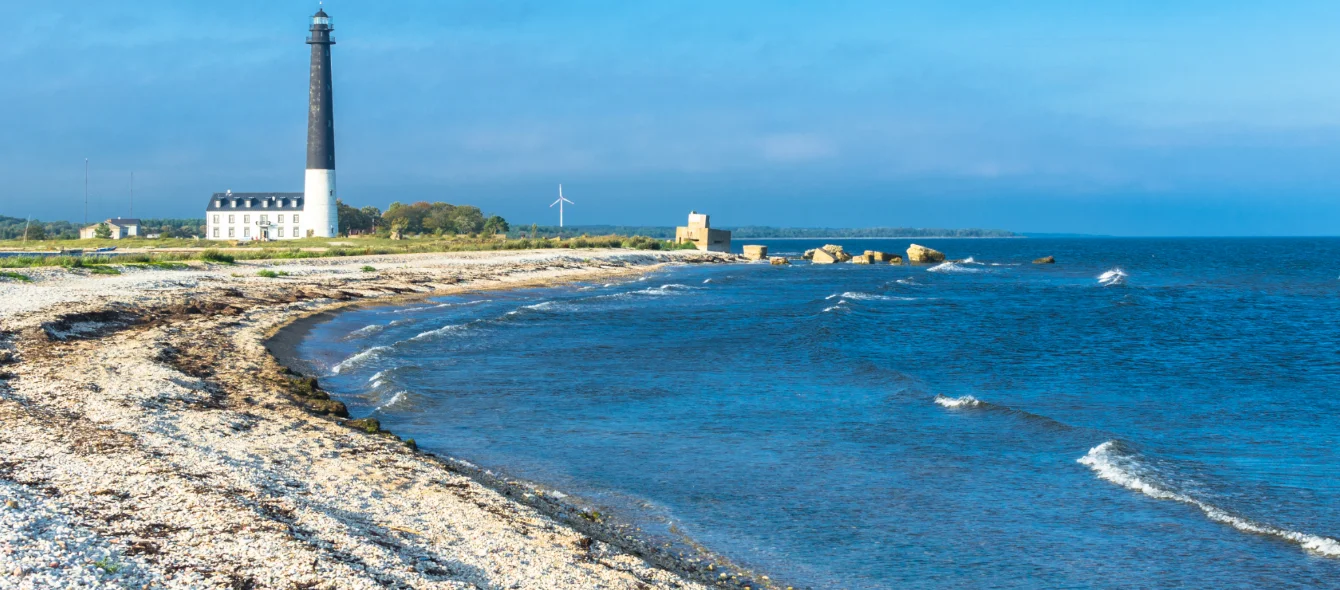The electricity systems of the Baltic states – Estonia, Latvia and Lithuania – in the post-Soviet era were effectively an energy island unconnected to other EU countries. This has been steadily addressed by the creation of the Baltic Ring, a system of five interconnectors, which now link the Baltic States with Finland (Estlink 1 and 2), Sweden (Nordbalt) and Poland (LitPol), which is also connected to Sweden via the SwePol link.
However, the three countries’ electricity systems remain synchronised with the systems of Russia and Belarus. The Baltic States plan to synchronise with Europe in 2025, which should result in more reliable power supplies, price levelling with the European electricity market and allow them to trade electricity almost anywhere in continental Europe.
LitPol Link – Securing power supply in the Baltic Region
Import dependency
Each Baltic state was dependent on electricity imports to meet demand in 2019. For Lithuania, this stems from the closure of the first unit of the 1.5 GW Ignalina nuclear power plant in 2004 and the second unit in 2009. Closure of the plant, the design of which was similar to Ukraine’s Chernobyl reactor, was a condition of Lithuania’s entry to the EU.
Estonia has typically been a net exporter of electricity but moved into deficit in 2019 as a result of less generation from its almost unique oil shale-fired generation plants. Oil shale should not be confused with shale oil which is crude oil – oil shale is sedimentary rock containing kerogen and Estonia’s only major solid fuel energy resource. Using oil shale for power generation is very carbon intensive and Estonia needs to phase out its use to reduce its greenhouse gas emissions. In 2018, oil shale accounted for 76% of the country’s electricity generation, but this dropped to 57% in 2019, according to Statistics Estonia, the government’s statistical office.
As a result, all three countries were net electricity importers in 2019 – Estonia generated 7.6 TWh, a drop of 38.6% from 2018, with net imports of 2.2 TWh, Latvia generated 6.4 TWh with net imports of 1.1 TWh, while Lithuania generated 3.7 TWh with net imports of 9.3 TWh.
Offshore wind
The relatively small size of the Baltic States’ electricity markets, the creation of the Baltic Ring, lack of indigenous energy sources and planned synchronisation with the European electricity system all shed an interesting light on the three countries’ offshore wind potential.
According to a report published in 2019, Study on Baltic Offshore Wind Energy Cooperation under BEMIP, Estonia’s Baltic Sea offshore wind resource is 7 GW, Latvia’s 14.5 GW and Lithuania’s 4.5 GW. Offshore wind could generate respectively 24 TWh, 49.2 TWh and 15.5 TWh of electricity a year, the report estimates, which in total is almost three times the Baltic States’ domestic electricity demand in 2019. Each country would become a significant net electricity exporter, while synchronisation with Europe would allow them to trade their surplus power in European markets. If fully realised, their offshore wind resources would require substantial additional interconnection capacity, possibly via expansion of the Baltic Ring and new interconnectors.
Heading offshore
The Lithuanian government last year approved plans for the development of a 700 MW offshore wind farm by 2030, with a tendering process to be launched in 2023. The country is expected to use a contract for difference system, similar to the UK, to auction capacity. The government has allocated €7.5 million to support environmental impact assessments and other studies and surveys necessary to facilitate the tender.
In September, Estonia and Latvia signed a memorandum of understanding on the joint development of an offshore wind farm in the Gulf of Riga with capacity of up to 1 GW. As a cross border project, it should be able to attract EU funding and would pave the way, in terms of experience and grid infrastructure, for future offshore wind farms. A development partner is to be chosen via a capacity auction. In addition to this there are several independent projects currently being developed in Estonia.
